Exploring the animal kingdom can be an adventure full of amazement and wonder, but let’s be honest—sometimes nature gets downright creepy. From the depths of our oceans to the dense canopies of rainforests, the world is filled with creatures that can send shivers down your spine. Whether it’s their bizarre appearance, alarming behaviors, or eerie environments, these animals are masters at making your skin crawl. So, let’s dive into this unsettling list of wild critters that are as unnerving as they are fascinating.
1. The Terrifyingly Transparent Glass Frog
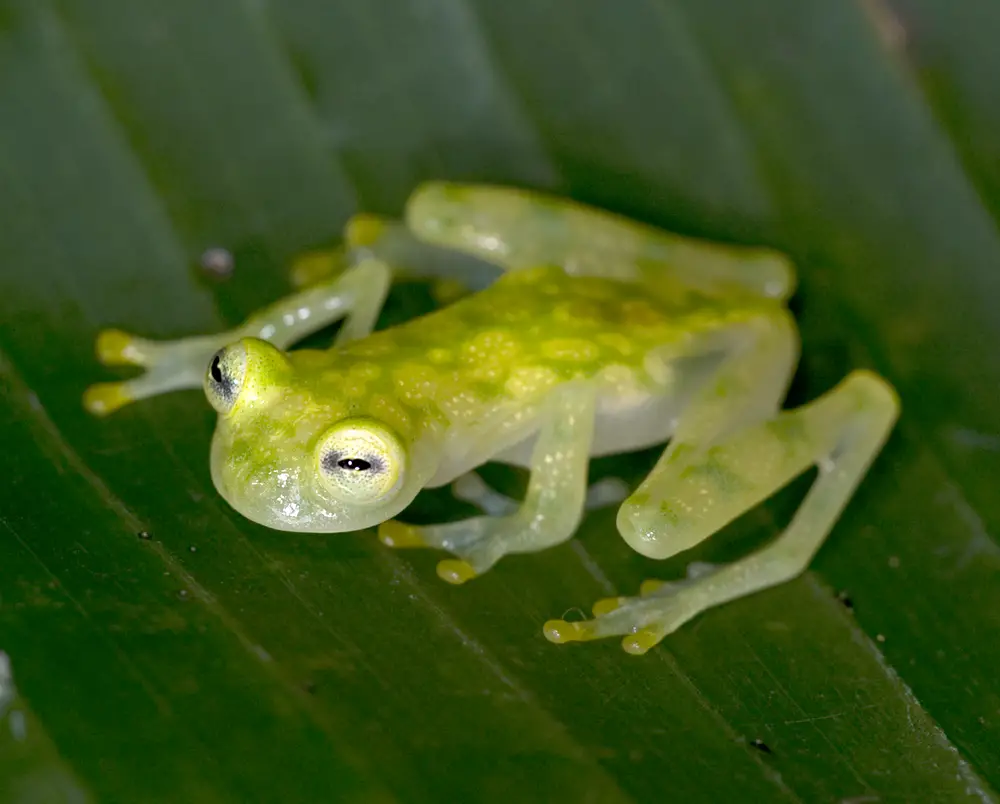
These small amphibians are known for their translucent skin, through which you can literally see their internal organs. This eerie transparency gives them a ghostly appearance as they leap through the rainforests of Central and South America. According to National Geographic, this adaptation may help them avoid predators by blending into their surroundings. Despite their delicate appearance, glass frogs are quite adept at surviving in their environment. They are active at night, adding to their mystique and the sense of unease they evoke.
In addition to their ghostly looks, glass frogs are also a bit spooky in their behaviors. When it’s time to care for their young, the male glass frog watches over the eggs, guarding them from predation and ensuring they get enough moisture. This dedication shows a softer side to their otherwise creepy persona. Moreover, their minimalistic vocalizations at night can add an eerie background chorus to the rainforest symphony. But don’t be fooled by their size or transparency; these frogs are a vital part of the ecosystem and play a significant role in controlling insect populations.
2. The Mysteriously Lurking Goblin Shark
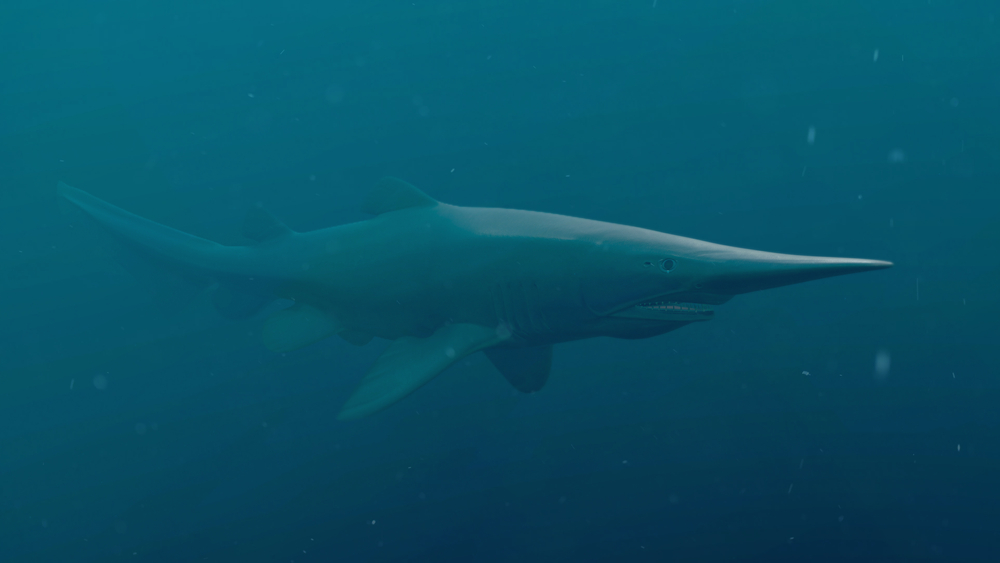
Imagine swimming in the ocean and encountering a goblin shark; it’s enough to send chills down anyone’s spine. Known as the “living fossil,” this creature is rarely seen by humans, lurking in the deep sea at depths of over 1,000 meters. Its distinctively elongated snout and extendable jaw make it look like it’s straight out of a horror movie. The goblin shark’s skin is an unnerving pinkish color, which only adds to its eerie allure. As it swims, it uses special sensors on its snout to detect the electrical fields of prey, turning the hunt into a ghostly pursuit.
The goblin shark’s ability to extend its jaw in a flash to catch unsuspecting prey makes it even creepier. This unique adaptation is known as “slingshot feeding,” allowing them to snatch their meals with one snap. Despite their terrifying looks, goblin sharks are not known to be a danger to humans, largely because they inhabit oceanic depths that are inaccessible to us. However, the mere thought of them swimming in the deep sea is enough to make anyone shiver. The Smithsonian Ocean Portal provides an excellent overview if you want to learn more about this fascinating creature.
3. The Hauntingly Hairy Aye-Aye
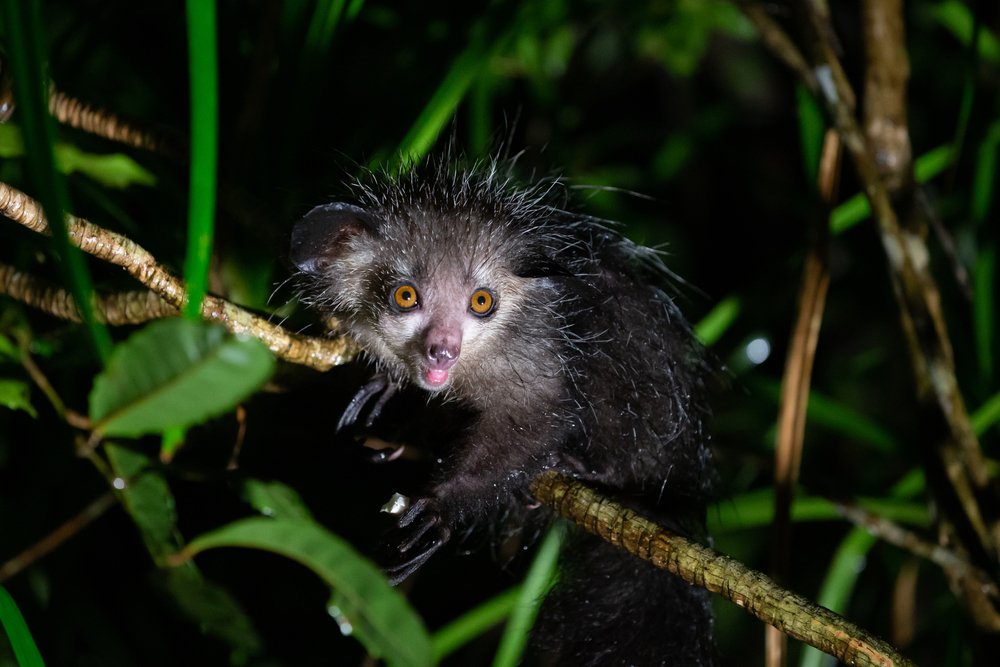
Meet the aye-aye, a nocturnal primate native to Madagascar with an appearance that’s often described as unsettling. Its large, reflective eyes and perpetually startled expression give it a ghost-like quality, amplified by its long, spindly fingers. The aye-aye’s middle finger is particularly long and thin, used expertly to tap on trees and locate grubs by sound, a behavior that has been linked to local superstitions. In fact, according to the Duke Lemur Center, many communities in Madagascar view the aye-aye as a harbinger of evil, which has sadly led to their numbers declining due to fear-driven killings.
Despite its creepy appearance, the aye-aye plays a crucial role in its ecosystem. It serves as Madagascar’s version of a woodpecker, keeping insect populations in check and aiding in seed dispersal. Watching an aye-aye in action is a fascinating yet eerie experience as it prowls silently through the trees, its beady eyes reflecting the moonlight. Although some may deem it as an omen, conservationists are working hard to change this perception and protect these unique creatures. Their quirky looks and unusual behaviors make them one of the most intriguing animals on the planet, albeit one that can make your hair stand on end.
4. The Creepy Crawling Giant Centipede
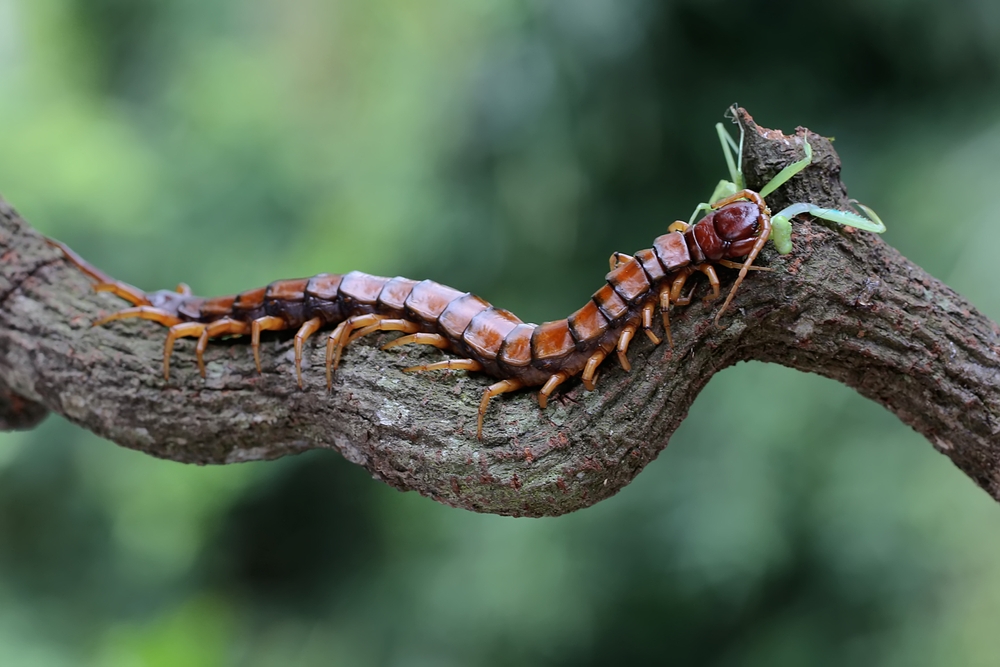
Centipedes already have a bad rap, but the giant centipede takes unsettling to a whole new level. Found in tropical and subtropical regions, this monstrous arthropod can grow over 12 inches long. Its segmented body and numerous legs are enough to induce a spine-tingling reaction for anyone who crosses its path. The giant centipede is not just about looks; it’s an aggressive predator known to take down prey as large as mice and small birds. It uses venomous forcipules, which are modified legs, to capture and paralyze its prey with incredible speed.
The venom of a giant centipede is potent and can cause severe pain in humans, adding to its formidable reputation. Despite their fearsome nature, they are fascinating creatures with a vital role in controlling the population of other insects and pests. They are excellent hunters, using their speed and venom to overpower their prey in a blink of an eye. While not typically fatal to humans, their bite is something most would prefer to avoid. Still, they serve as a reminder of the diversity and unpredictability of Mother Nature’s creations.
5. The Eerily Elusive Goliath Bird-Eating Spider
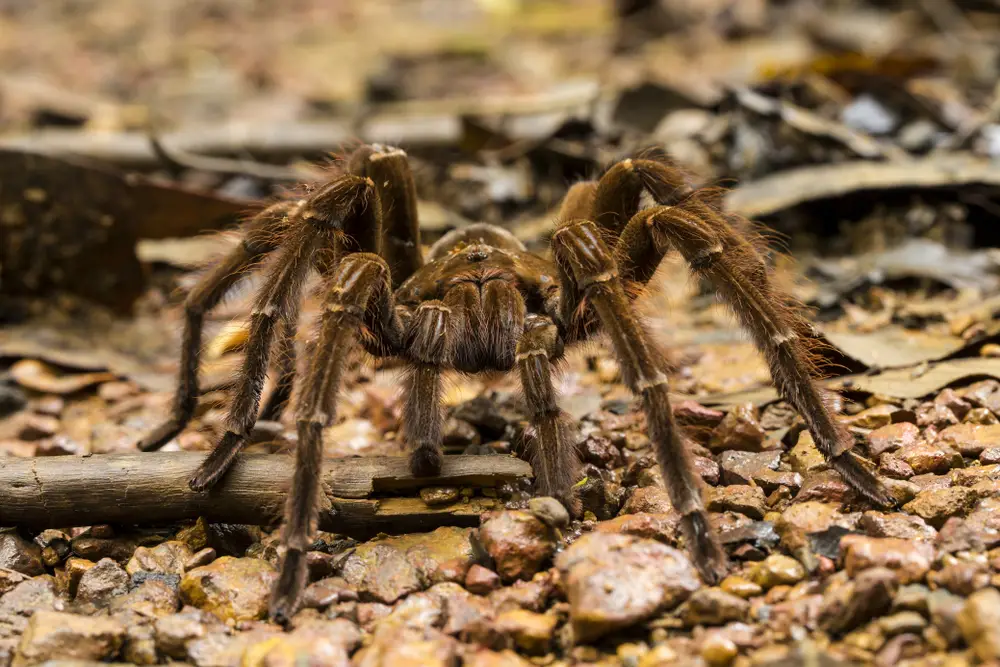
The goliath bird-eating spider, the largest spider in the world by mass, is a creature that seems to have crept straight out of a nightmare. Native to the rainforests of South America, this spider can have a leg span of up to 11 inches and weigh over 6 ounces. Despite its name, it rarely eats birds, preferring to dine on insects, rodents, and small reptiles. However, the image of a spider large enough to consider a bird as potential prey is terrifying on its own. Their enormous size, hairy legs, and ability to make hissing noises by rubbing their legs together make them an unnerving presence.
The goliath’s venom is not deadly to humans, but its fangs can still deliver a painful bite. This, coupled with their size and appearance, can be quite intimidating. However, these spiders play a critical role in maintaining the ecological balance in their rainforest homes. Their predatory nature helps to control the populations of various creatures, ensuring the ecosystem remains healthy. While they might look like they belong in a horror movie, they remind us of the incredible diversity of life on Earth.
6. The Sinister-Looking Vampire Bat
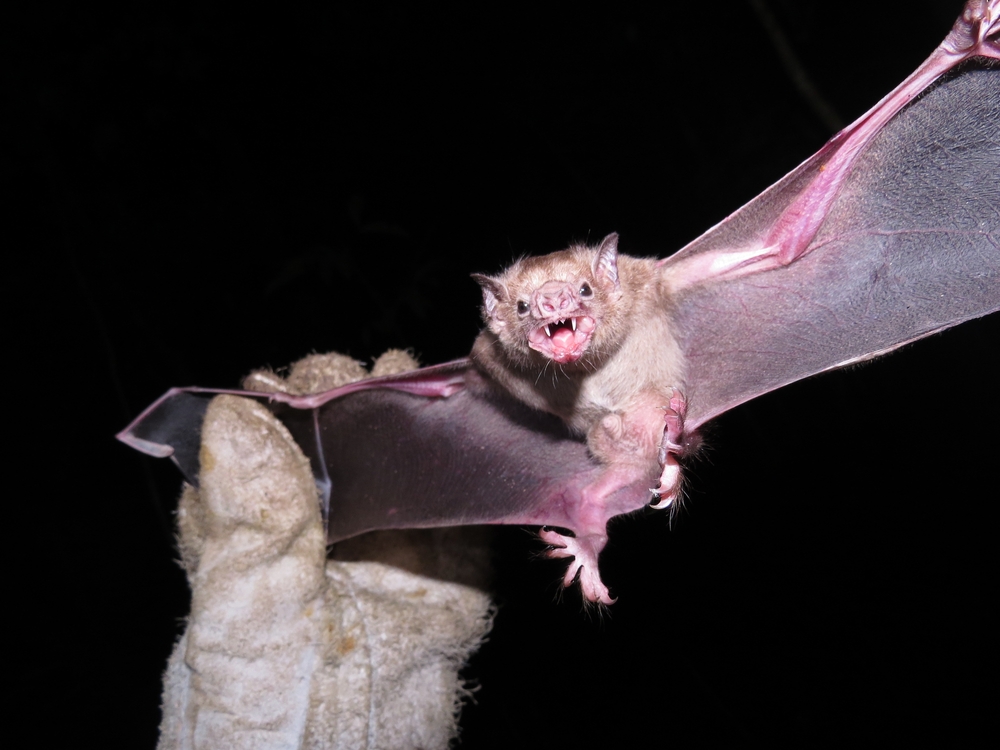
Vampire bats have a fearsome reputation, thanks to their eerie name and the myths surrounding their blood-drinking habits. Found in the Americas, these small bats have evolved to feed exclusively on blood, primarily from livestock and birds. Their razor-sharp teeth enable them to make a small incision in their prey and lap up the flowing blood without waking their unsuspecting host. Although their feeding habits sound like something out of a ghost story, vampire bats are quite calculated and strategic in their approach, ensuring their survival in a unique ecological niche.
Contrary to popular belief, vampire bats do not pose a significant threat to humans. In fact, their anticoagulant saliva has been the subject of medical research for its potential applications in treating blood clots. These nocturnal creatures have a complex social structure and often share blood meals with less fortunate members of their colony. While their appearance and dietary preferences might make some people uneasy, vampire bats are a testament to nature’s versatility and adaptability. They highlight the fine line between fear and fascination when it comes to understanding the animal world.
7. The Menacingly Mysterious Deep-Sea Anglerfish
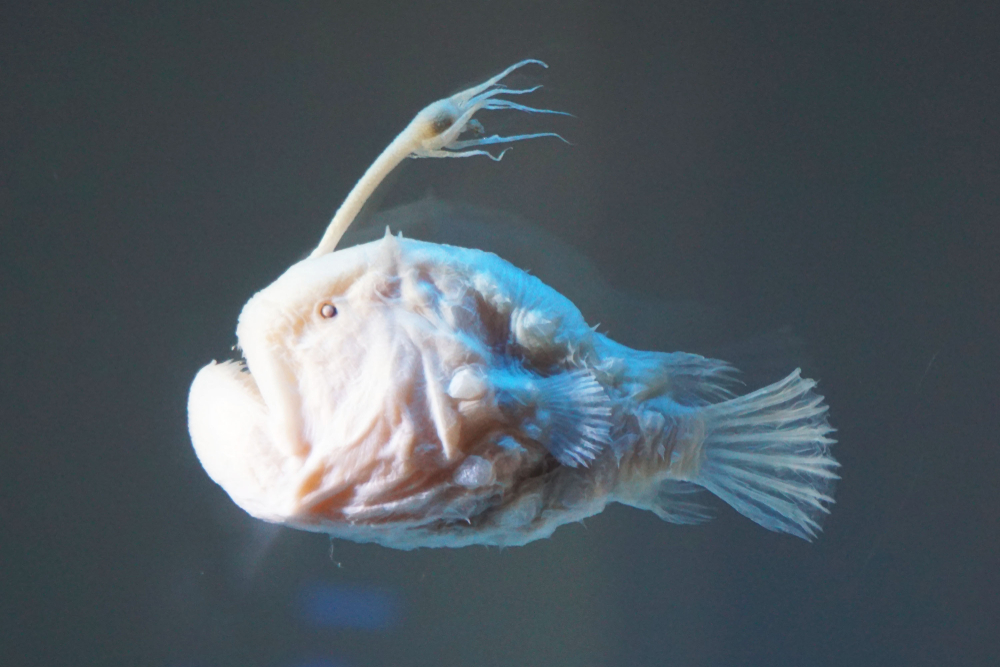
The deep-sea anglerfish is a creature that looks like it was designed to haunt your dreams. Found in the pitch-black depths of the ocean, it uses a bioluminescent lure attached to its head to entice prey in the dark abyss. This bizarre adaptation, combined with its gaping maw of sharp teeth, gives it a ghastly appearance. Anglerfish can swallow prey up to twice their size, thanks to their highly flexible bodies and stomachs. The females, which are much larger than the males, are the ones equipped with this eerie “fishing pole.”
The reproductive habits of anglerfish are just as unsettling as their looks. Males attach themselves to females, effectively becoming a parasitic appendage that provides sperm in exchange for nutrients. This unusual mating process is a testament to the extreme adaptations required for survival in the harsh environment of the deep ocean. While their looks might be nightmare-inducing, anglerfish are superbly adapted to their unique niche. They serve as a reminder of the alien-like worlds that exist beneath the ocean surface, waiting to be explored.
8. The Chillingly Camouflaged Leaf-Tailed Gecko
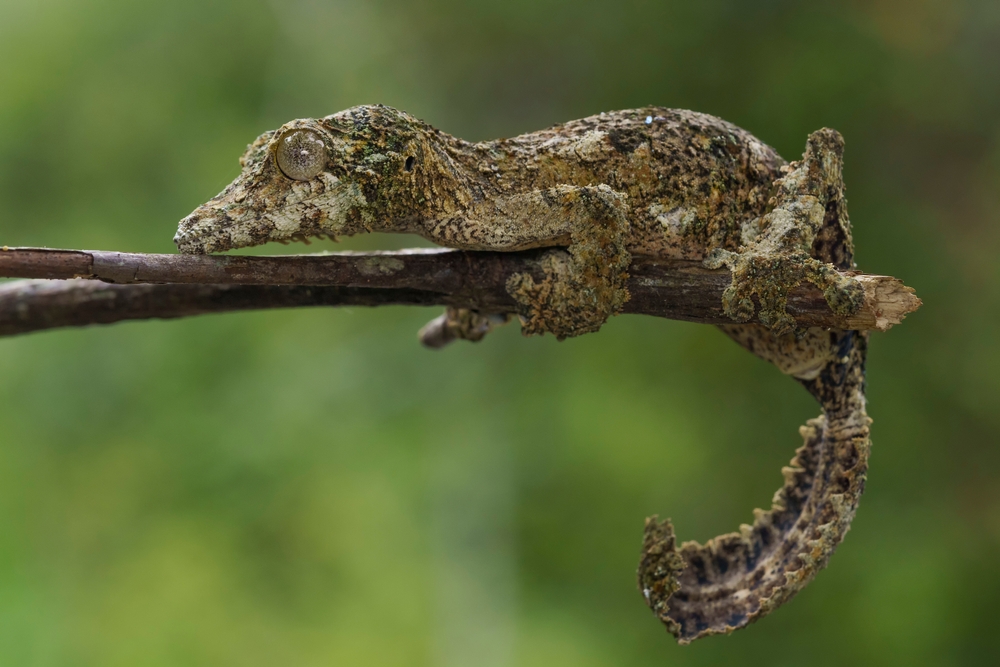
Leaf-tailed geckos are masters of disguise with an appearance that can make even the bravest souls uneasy. Found primarily in Madagascar, these reptiles have evolved to mimic dead leaves or tree bark with uncanny accuracy. Their cryptic appearance allows them to blend seamlessly into their forest habitat, avoiding predators and sneaking up on prey. The leaf-tailed gecko’s ability to remain motionless for extended periods adds to its eerie presence, as it often appears to be nothing more than a part of the surrounding foliage.
In addition to their incredible camouflage, leaf-tailed geckos exhibit some truly bizarre behaviors. They can shed their tails to escape predators, leaving behind a wriggling bit of flesh as a distraction. Their eyes are also unsettlingly large, allowing them to see exceptionally well in the low light conditions of their nocturnal lifestyle. As creepy as they might appear, these geckos play a crucial role in controlling insect populations and maintaining the ecological balance in their environment. They are a reminder of the lengths to which evolution will go to ensure a species’ survival.
9. The Terrifying Tentacles of the Giant Pacific Octopus
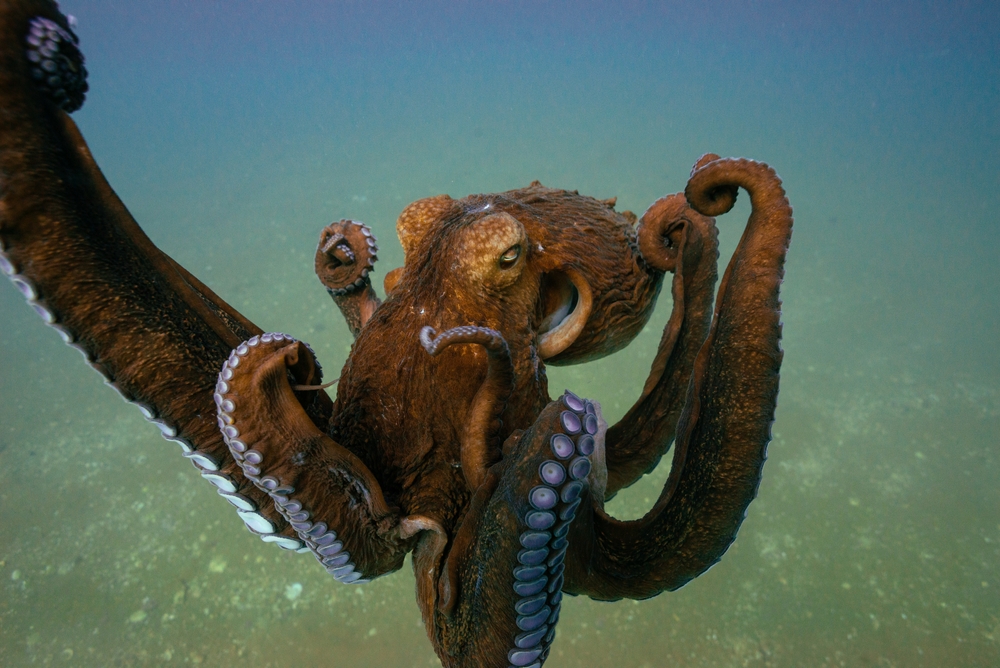
The giant Pacific octopus, with its sprawling tentacles and extraordinary intelligence, is as fascinating as it is frightening. Native to the cold waters of the North Pacific, these cephalopods can grow to impressive sizes, with arm spans reaching up to 20 feet. Their ability to change color and texture for camouflage adds to their mystique, allowing them to vanish into their surroundings or intimidate potential threats. The giant Pacific octopus’s soft, boneless body enables it to squeeze through impossibly tight spaces, making it an expert escape artist.
Beyond their physical capabilities, these octopuses are renowned for their intelligence and problem-solving skills. They can navigate mazes, open jars, and even recognize individual humans, which only adds to their eerie allure. Their predatory tactics, which include ambushing prey and using their tentacles to envelop and incapacitate, are both fascinating and unsettling. While their appearance can be intimidating, the giant Pacific octopus plays a vital role in marine ecosystems as both predator and prey. They remind us of the incredible adaptability and complexity of life beneath the waves.
10. The Sinister Smile of the Nile Crocodile
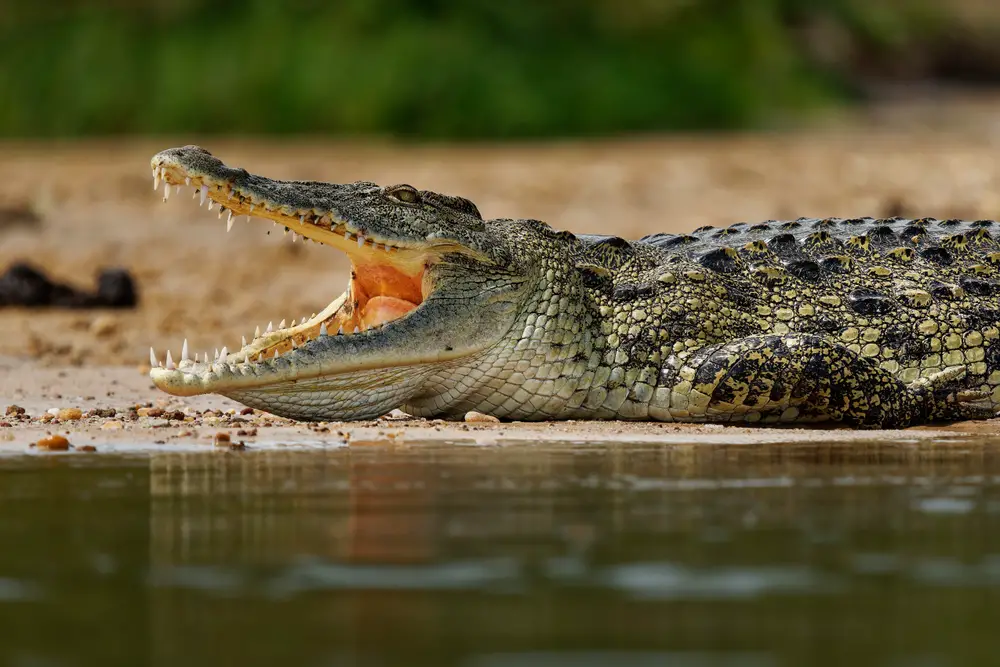
The Nile crocodile is a fearsome predator with a reputation for being one of Africa’s most dangerous animals. With a mouth full of sharp teeth and a powerful, muscular body, these crocodiles can reach lengths of over 16 feet. Their ambush tactics involve silently lurking beneath the water’s surface, waiting for the perfect moment to strike at unsuspecting prey. The sight of their eyes peeking just above the waterline is enough to make anyone’s blood run cold. Known for their incredible strength, Nile crocodiles can take down large animals like zebras and wildebeests.
Despite their fearsome reputation, Nile crocodiles play a crucial role in the ecosystems they inhabit. By controlling the population of certain species, they help maintain the balance of their habitats. These crocodiles are also highly social, often engaging in complex communication and cooperation during hunts. While their presence can be terrifying, they are an important part of the natural world. The Nile crocodile serves as a stark reminder of the power and danger that lie within the animal kingdom, and the need to respect and understand these majestic creatures.
